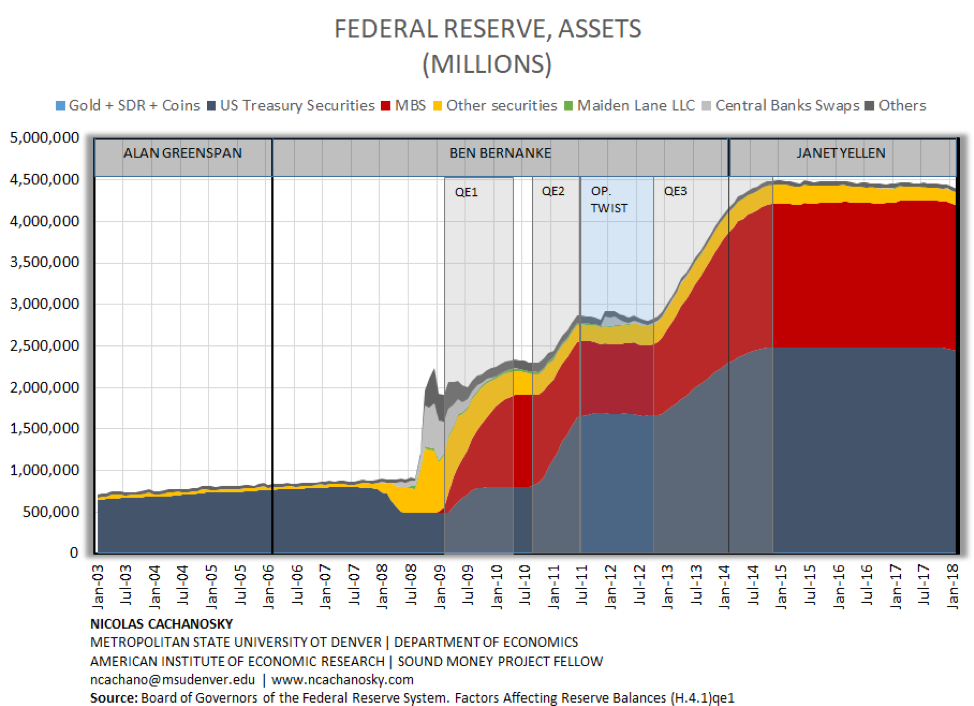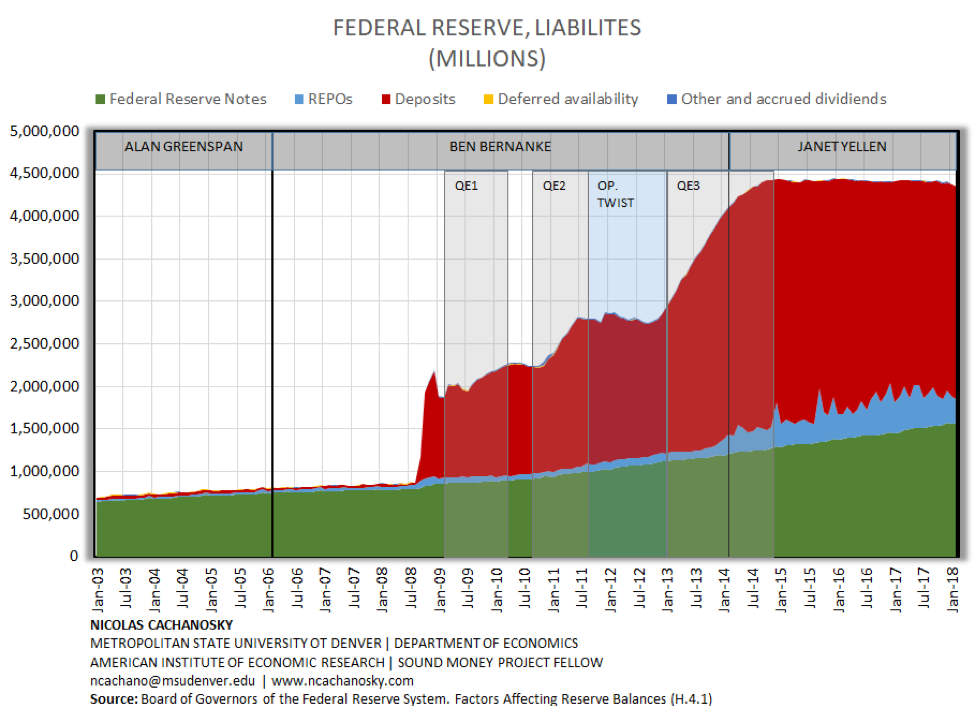What Does the Federal Reserve Balance Sheet Look Like?
In August, it will be 10 years since the Federal Reserve balance sheet exploded in size. How does it look now? The two figures included in this post show the evolution of the assets and liabilities of the Federal Reserve between January 2003 and March 2018.
The assets side shows that the increase in the balance sheet has been driven by the acquisition of securities and mortgage-backed securities (MBS), as is well-known. The liabilities side shows this acquisition has been financed with deposits. Specifically, the Federal Reserve has paid interest on reserves so banks will keep excess reserves instead of increasing lending to the market. Simply put, the Fed prints $100, buys MBS from a bank, and then pays interest on reserves to the bank to get it to keep the $100 as a deposit at the Fed.
The figures also show the impacts of QE1, QE2, Operation Twist, and QE3. It can be seen that since the end of QE3, the Fed’s balance sheet has been very slowly but steadily decreasing, although total assets are still 4.8 times their value in August 2008. What is more interesting, however, is how this reduction has taken place.
Total assets have fallen $85,532 million. This represents a meager 1.9 percent reduction. It can be explained by a fall in the holding of securities. However, while the position in Treasuries and other securities has fallen, the holding of MBS has increased by $45,283 million (a 2.6 percent increase). It seems then that the Fed is still cleaning up some other financial institutions’ balance sheets. MBS still represent 40 percent of all assets.
On the other side of the ledger, the fall in liabilities can be explained by a decrease of deposits at the Fed. Excess reserves started to fall in late 2015, but deposits still represent 58 percent of all liabilities.
A decade after the crisis, the size of the Fed’s balance sheet remains as important an issue as it was at the end of QE3.











